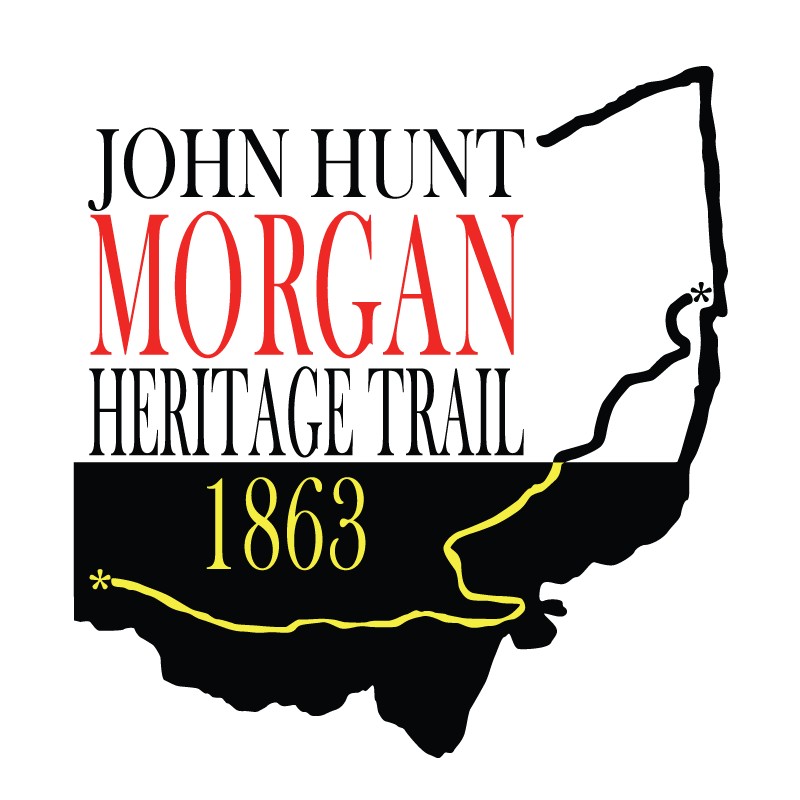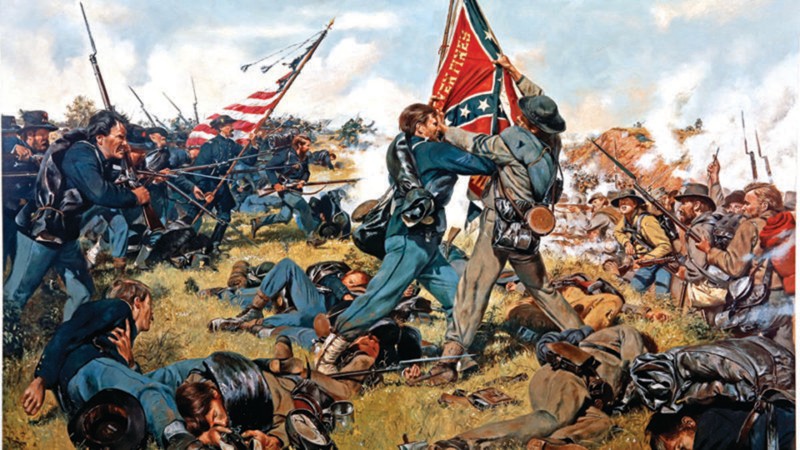Evendale - Morgan's Raiders Spread Out from Sharonville
Introduction
Text-to-speech Audio
It was now July 14, Morgan and his men had been in Ohio for just under two days and had managed to move more than 30 miles almost entirely unopposed. Though US cavalry forces remained in pursuit, a lack of access to fresh horses and supplies had cause them to lose precious time. Morgan and his men retained an advantage by arriving in towns first to get their pick of the best horses and food.
Images
Tour Logo

Tour Sign #6
.jpg)
%202.jpg)
Depiction of the Battle of Gettysburg

Confederate General Adam Johnson

Gorman Heriatge Farm

Barn built in 1835 (later expanded in 1912) on the Brown-Gorman Farm.

Backstory and Context
Text-to-speech Audio
Morgan’s Raid was not the only major event of the Civil War in the summer of 1863. 10 Days before Morgan entered Ohio the Battle of Gettysburg, the bloodiest battle in American history, came to an end. Union forces had defeated the Confederates, forcing them onto a retreat back south. Despite this victory, 11 days later, Morgan and his 2,000 raider were still riding almost unopposed through Union territory. Pursuing US forces were unable to gain ground on the Confederates without access to fresh horses and provisions.
Now past the feared railroad crossing in Glendale, Morgan once again divided his forces. Divided into two main columns, from there the rebels further divided into small squads, fanning out to forage for horses, food, and other supplies. Morgan and General Adam Johnson led one column south toward Reading. The other column was led by General Basil Duke, who led his force east. Morgan’s force arrived in the village of Evendale. A group watered their horses at George Brown’s lower springhouse. The raiders also stole two horses from the barn. Eventually, one horse was returned though it was badly damaged due to hard use. The other horse was later recovered by the 8th Kentucky cavalry but never returned. Brown was granted $150 in compensation for the lost horse but his claim for the damaged horse was rejected.
Today, the village of Evendale operates the site as the Gorman Heritage Farm, named for the original owners from whom George Brown bought the property. The fifth interpretive sign on the tour is located near the entrance of the Heritage Fam.
Sources
Caholl, Lora Schmidt. Mowery, David L.. The Civil War Guidebook of the John Hunt Morgan Heritage Trail. Ohio Historical Society, 2014.
Morgan's Raid, Ohio History Central. Accessed October 20th 2021. http://ohiohistorycentral.org/w/Morgan%27s_Raid.
Morgan's Raid into Ohio, Carnegie Public Library. Accessed October 20th 2021. https://www.carnegie.lib.oh.us/morgan.
Remembering Morgan's Raid, Ohio History Connection. July 13th 2013. Accessed Ocobter 20th 2021. - https://www.ohiohistory.org/learn/collections/history/history-blog/2013/july-2013/remembering-morgan-raid.
Hilton, Mark . Evendale: Morgan's Raiders Spread Out from Sharonville, The Historical Marker Database. September 13th 2017. Accessed October 21st 2021. https://www.hmdb.org/m.asp?m=108240.
http://ohioatperryville.blogspot.com/2019/12/breweries-along-john-hunt-morgan.html?m=0
https://www.hmdb.org/m.asp?m=108240
https://www.historynet.com/12-forgotten-heroes-of-gettysburg.htm
https://blog.history.in.gov/adam-johnsons-raid-on-newburgh-2/
https://www.hmdb.org/m.asp?m=108240
https://en.wikipedia.org/wiki/Gorman_Heritage_Farm#/media/File:Brown-Gorman_Farm_barn.jpg
